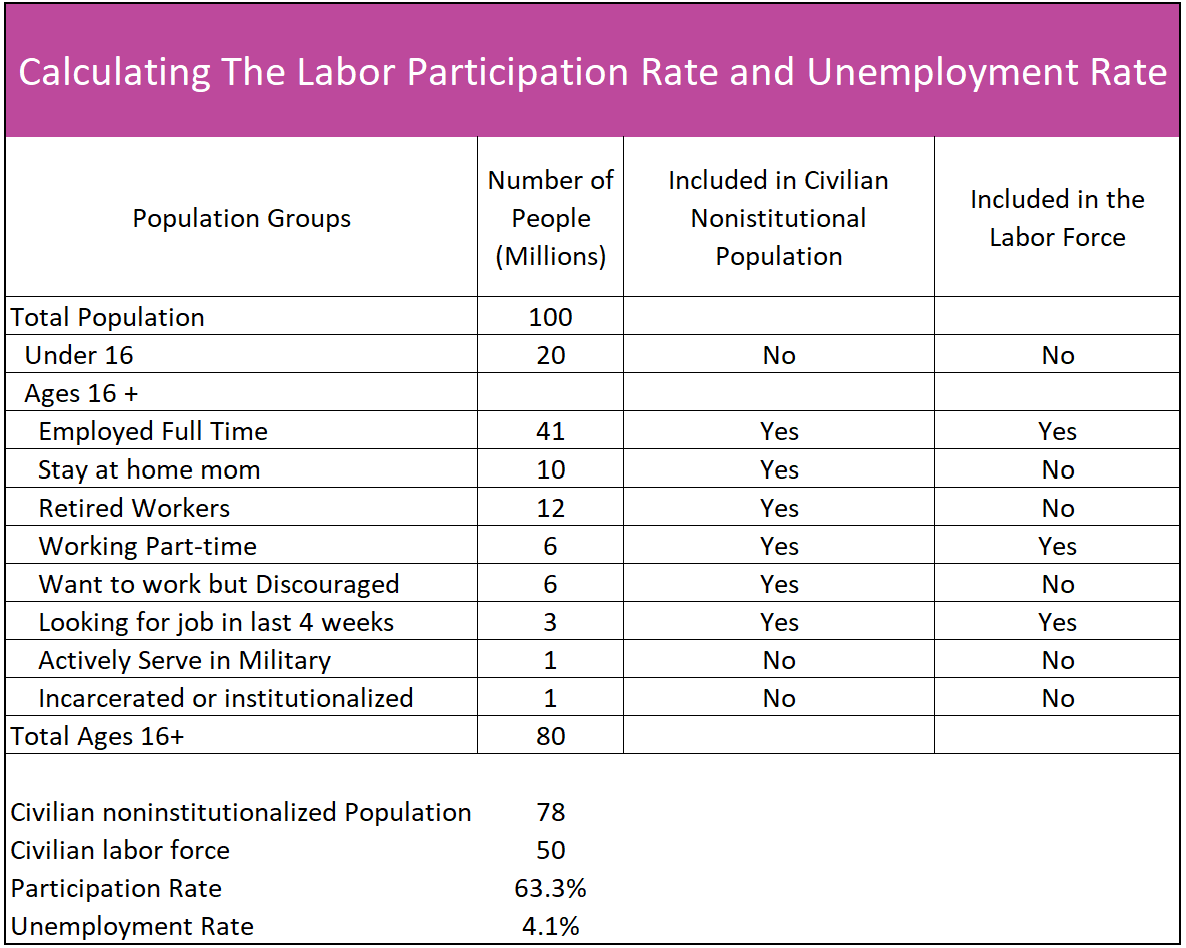The labor participation rate equals the percentage of the working-age civilian noninstitutionalized population actively participating in the labor market.
Knowing who is in the working-age civilian noninstitutionalized population and who is actively participating in the labor market is essential to understanding and calculating the participation rate. To illustrate the application of these terms, let’s consider a hypothetical example using a table summarizing a country’s population.

First, the working-age civilian noninstitutional population must be identified. Children less than sixteen are not considered because they are not working age. Individuals serving in the military are not included, as they are not civilians. Similarly, those in mental institutions, elderly care facilities, or serving prison terms are excluded due to their institutionalized status. Everyone else falls under the working-age civilian noninstitutionalized population, which equals 78 million people in our example.
The labor force includes people who are employed and unemployed. Employed workers include individuals who have jobs, whether they are part-time, full-time, temporary, or year-round. On the other hand, the unemployed includes jobless individuals who have searched for employment in the past four weeks and are available for work. Retired individuals, stay-at-home parents, and discouraged workers (even if they want to work) are not included in the labor force. In our example, the labor force would equal 50 million people, and the participation rate would equal 63.3 percent. In our example, the unemployment rate would equal 4.1 percent because it is the percentage of the labor force actively seeking employment.
When analyzing the labor market, it is crucial to consider the unemployment rate in conjunction with the participation rate. An increase in the unemployment rate might lead one to believe that the economy is deteriorating. However, a growing economy’s unemployment rate can increase if the participation rate also increases. This scenario suggests that more people have entered the labor market but have not yet found employment.
A declining participation rate can have detrimental effects on an economy. When fewer people contribute to the production of goods and services, overall economic output can suffer. A lower participation rate may also decrease tax revenues as income taxes decline due to fewer individuals earning income from work.
Various factors contribute to changes in the participation rate. For example, the participation rate fell from 63.4 percent in February 2020, just before COVID-19, to 60.2 percent, in April 2020, after the severity of COVID became apparent. Widespread fear of sickness convinced people to withdraw from the labor force. Parents chose to remain home with their children rather than risk a family member contracting COVID. Many older people reevaluated their work-life balance and decided to drop out of the labor force. Choosing to attend school rather than work also decreases the participation rate. On the other hand, improved economic conditions and higher wages can attract more people to enter the workforce, thereby increasing the participation rate.
Fiscal Policy – Managing an Economy by Taxing and Spending
Monetary Policy – The Power of an Interest Rate